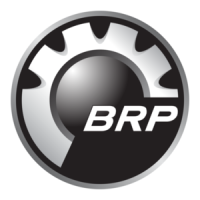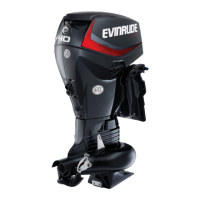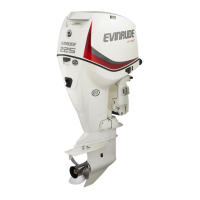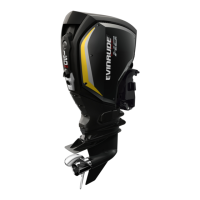TROUBLE CHECK CHART
OUTBOARD HARD TO START
T–3
OUTBOARD HARD TO START
OBSERVATION POSSIBLE CAUSE PROCEDURE
Outboard eventually
starts, may or may not
run properly once
started
Weak battery Check battery, recharge or replace
Battery cables and connections
Clean and tighten connections, check voltage
drop on high amperage circuit
Starter or bendix/drive gears Check starter, inspect bendix/drive gears
Water in fuel system
Check water separator/fuel filter, sample fuel from
fuel return manifold test port
Contaminated or poor fuel
quality
Check or replace fuel supply
Air in fuel system
Check for air in fuel supply manifold, refer to
FUEL SYSTEM on p. 173 (vapor separator
venting and fuel supply)
Incorrect, fouled, or worn spark
plugs
Replace spark plugs
Low fuel pressure
Check pressure, refer to FUEL SYSTEM on
p. 173
Fuel supply restricted
Check primer bulb, anti-siphon valve, and fuel
pick-up, check for fuel system air leaks
Low or no alternator output
(55 V)
Check voltage on 55 V circuit, refer to SYSTEM
ANALYSIS on p. 113 and ELECTRICAL AND
IGNITION on p. 135
Capacitor or 55 V circuit wiring
Check capacitor and 55 V circuit (white/red), refer
to SYSTEM ANALYSIS on p. 113 and
ELECTRICAL AND IGNITION on p. 135
Restricted or leaking fuel
injector(s)
Check injectors, refer to FUEL SYSTEM on p. 173
Weak or erratic ignition
operation
Check ignition, refer to SYSTEM ANALYSIS on
p. 113 and ELECTRICAL AND IGNITION on
p. 135
Crankshaft Position Sensor
(CPS)
Check CPS air gap and EMM LED indicators
Excessive fuel or oil, engine
flooding
Check for leaking injectors, leaking fuel or oil lift
pump, or leaking vapor separator vent. Refer to
SYSTEM ANALYSIS on p. 113.
EMM program, timing, or
operation
Check EMM program and timing;
check injector
coefficients; and monitor injector circuits and
ignition primary outputs
Internal powerhead damage Check and repair as needed
Low compression Check compression
Leaking cylinder/crankcase,
intake manifold, or reed valves
Check and repair as needed
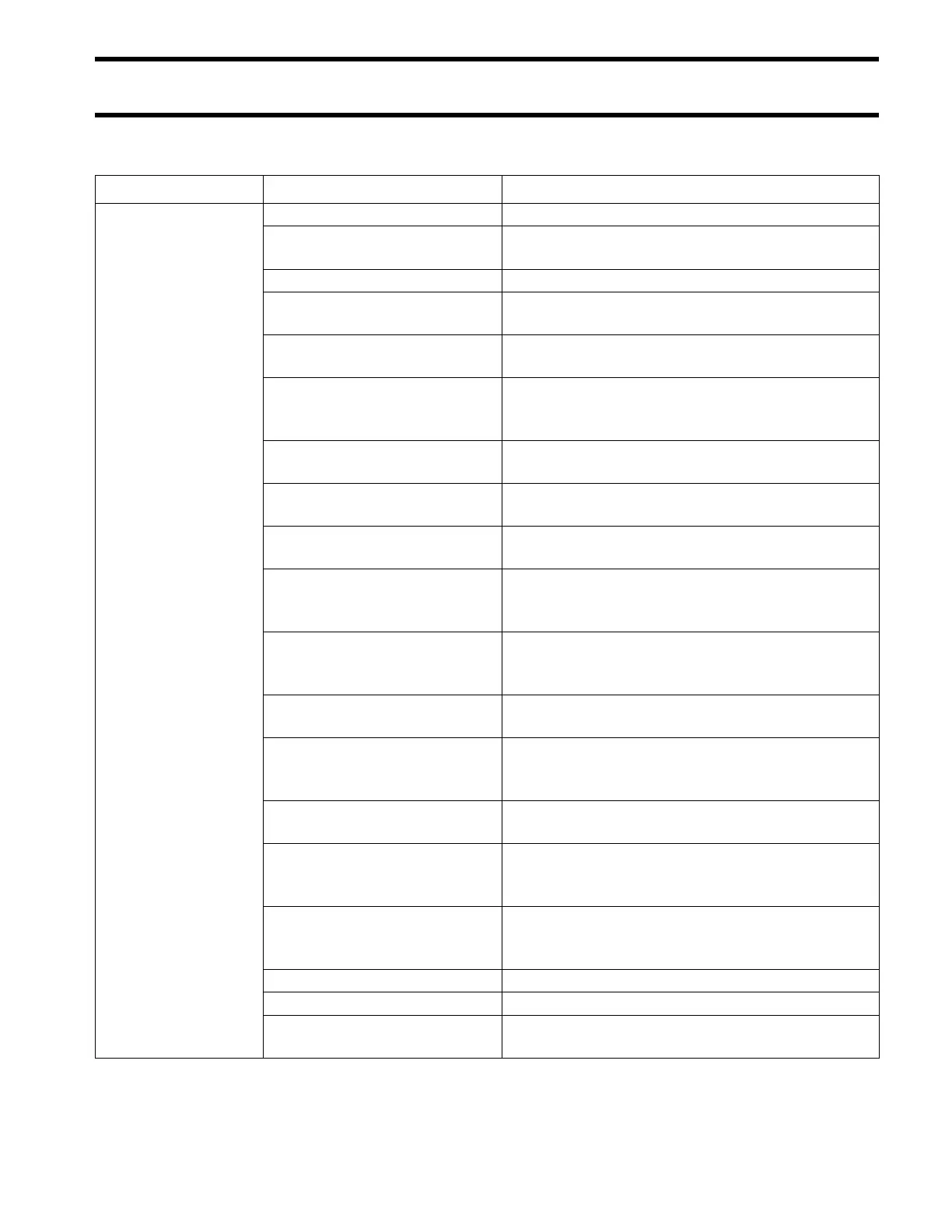